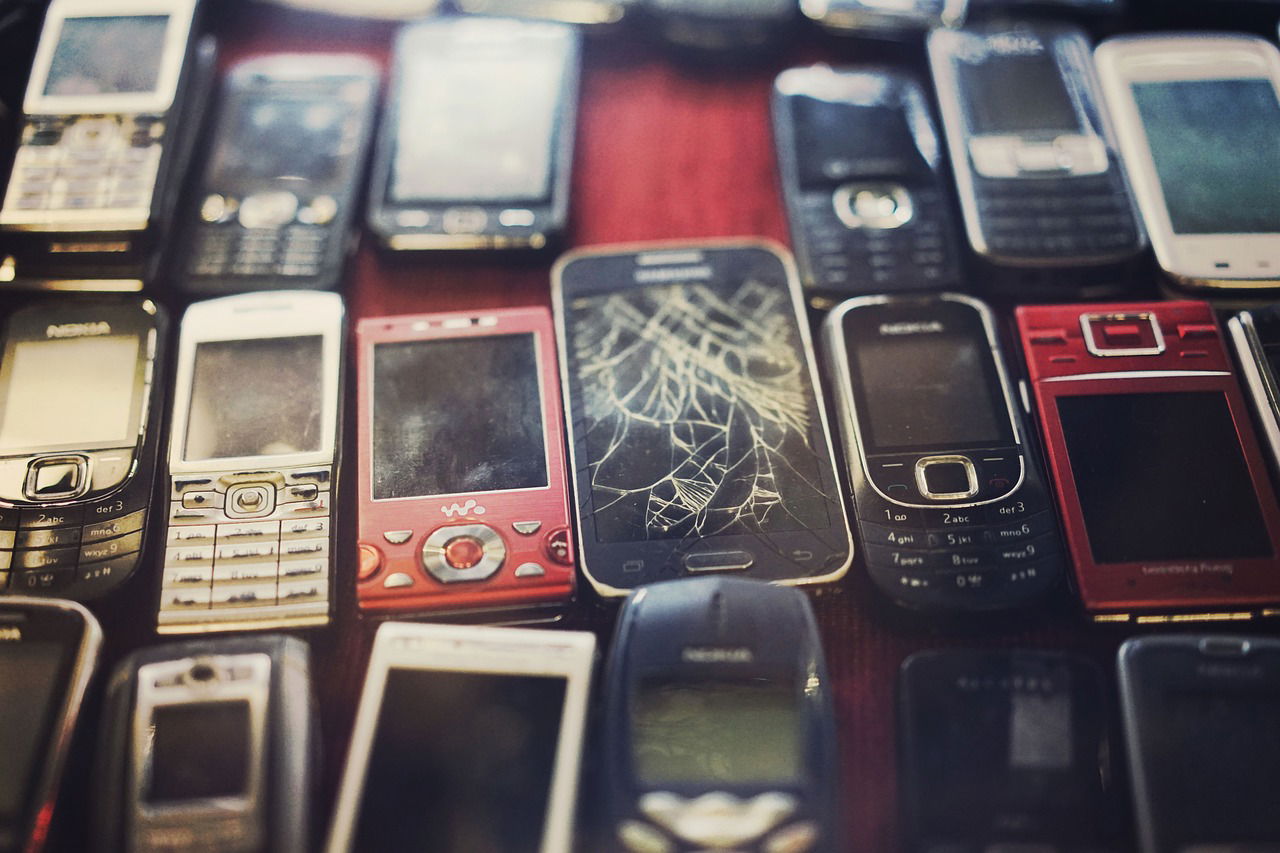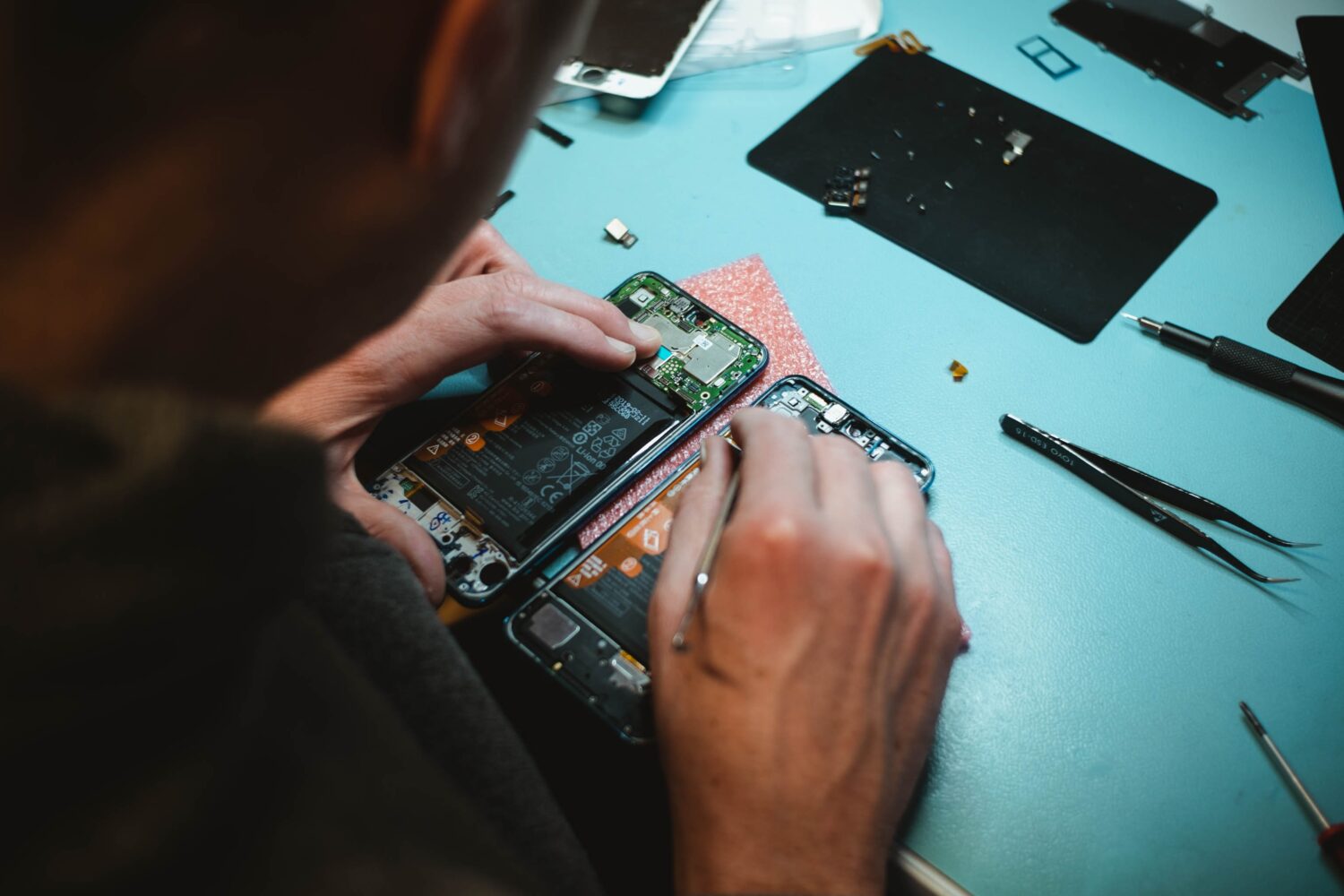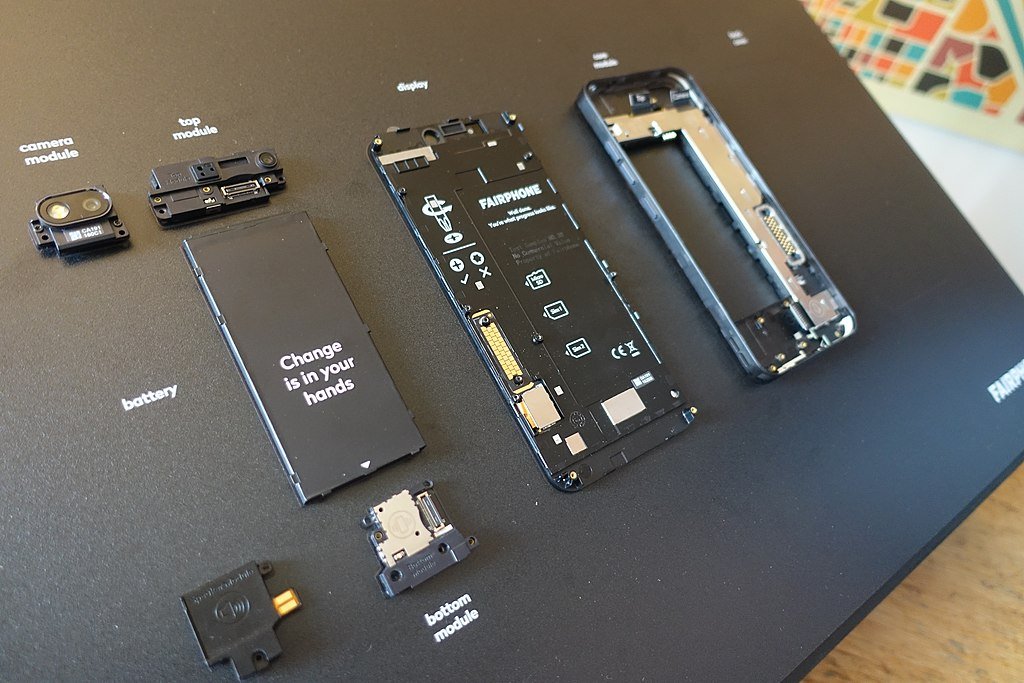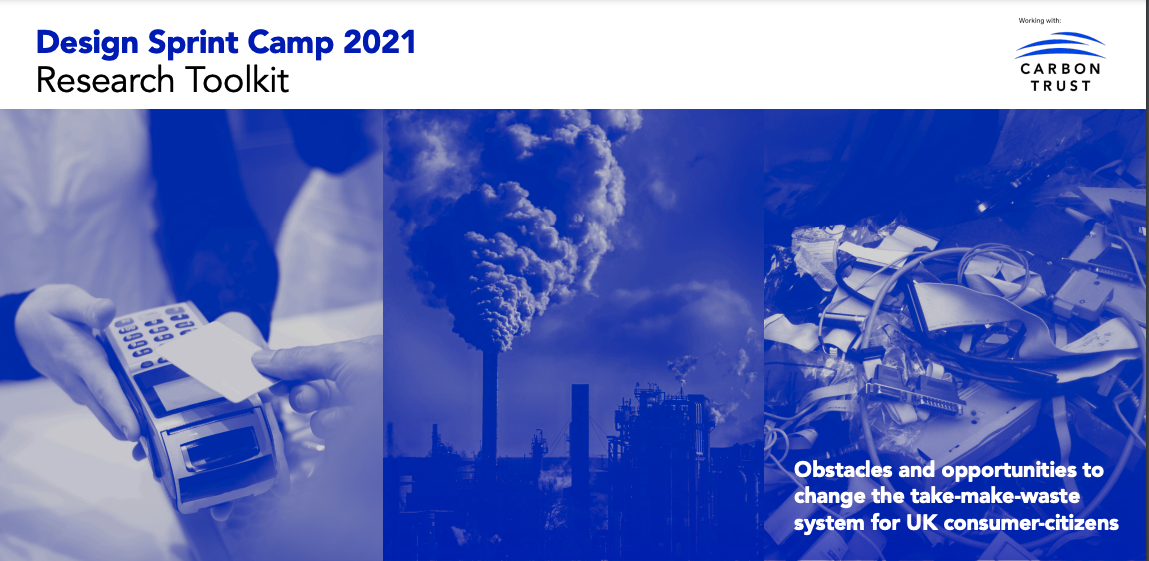
by Ben Crisp — Oct 25, 2021
“Hypnophoneified” is how comedian Jerry Seinfeld describes our growing dependence on smartphones. “That’s why it’s called an iPhone,” he quips, “because it’s half me and half phone and that’s a complete individual.”
Seinfeld is poking fun at our obsession but he is not exaggerating. Although estimates of how many of us own smartphone vary wildly – some say more than eight out of ten of us do, others say just over half – it is accepted that this proportion will grow dramatically by 2025. This obsession probably isn’t great for us psychologically – on average, we check our phones 58 times a day – and it certainly isn’t good for the planet.
A climate for change
As world leaders gather at COP 26 in Glasgow, there is a growing recognition among scientists, politicians and business leaders that only holistic thinking can avert catastrophic climate change.
“We cannot create a true low carbon economy if we focus exclusively on a few industries such as oil and gas, mining and transport. We need to recognise that every action we take and every purchase we make, has environmental consequences,” says David Kester, founder and managing director of DK&A and the Design Thinkers Academy London.
“That means, in this instance, recognising that our love of consumer electronics in general – and smartphones in particular – is heating up the planet.” The Design Thinkers Academy is organising a Design Sprint Camp, in partnership with The Carbon Trust, to accelerate progress in achieving net zero.
Kester’s stark warning is supported by the facts. Lotfi Belkhir, chair of eco-entrepreneurship at Canada’s McMasters University, estimates that the information computer technology (ICT) sector is already responsible for 3.5% of the world’s carbon footprint (compared to 1% in 2007). If nothing changes, that figure could soar to 14% by 2040.
Smartphones account for 11% of those emissions, far outweighing the individual contribution of PCs, laptops and computer displays. Between 2010 and 2020, Belkhir estimates, annual emissions caused by smartphones jumped from 17 to 125 megatons of CO2 equivalent.
This complex network of problems, many of which overlap, is hardly unique to the ICT sector, which is why David Cormand, the French Green Party MEP. has warned: “Sustainability will not be achieved through sporadic, unrelated actions; rather it needs to adopt a systematic approach.”
 The new right to repair rules in place in the European Union and the UK are a step in the right direction, but they will not fix a system which, Cormand felt, was stacked in favour of companies that “capitalise on waste, consumer deception, the destruction of our eco-systems, poor quality and cheap products.”
The new right to repair rules in place in the European Union and the UK are a step in the right direction, but they will not fix a system which, Cormand felt, was stacked in favour of companies that “capitalise on waste, consumer deception, the destruction of our eco-systems, poor quality and cheap products.”
The process of exercising your right to repair is often, the MEP said, suggests, unnecessarily difficult: “The repair costs may be virtually the same as buying a new product, the spare parts may no longer exist and repairers can struggle to get access to them.”
It can be hard for consumers to identify the most sustainable option. In classical economic theory, the efficiency of the free market relies on participants making a rational choice because they all have access to perfect information. In practice, the information on many devices is hard to understand, not comparable between brands and, at worst, so misleading it is tantamount to ‘greenwashing’. The French government has tried to remedy these problems with its own repairability index.
To confuse matters further, manufacturers and network providers bombard consumers with tempting offers to switch to a new phone. (There is some encouraging news on that score: the average replacement cycle for smartphones in 2020 was 33.6 months, compared to 25.1 months in 2015). The Swedish governments has gone so far as to offer a £2,000 tax incentive to encourage consumers to repair their products.
Sustainable smartphones
“Design thinking can help create more sustainable smartphones,” says Kester. “If you are already in the industry, starting afresh with a blank sheet of paper is not a realistic option. But Design Thinking is an iterative process, which deepens our understanding of the customer, challenges our assumptions and redefines the problems so that, as we adapt, we are moving towards the model the industry ultimately needs to adopt.”
The obvious first step in this process is to understand the industry’s carbon footprint. If annual emissions caused by smartphones reached 125 megatons of CO2 equivalent in 2020, where do those emissions come from?
The overwhelming majority – studies suggest between 85-95% – occur during production. The apparent simplicity of a smartphone is deceptive. Each one is, in effect, a pocket computer. Apart from the energy expended in manufacturing these devices, there is the time and resource required to find and extract such elements as aluminium, cobalt, copper, gold, graphite, iron, lead, lithium, magnesium, silicon, silver and tin. Most smartphones use 16 (out of 17) rare earth materials which are predominantly sourced from China.
 The extraction of these minerals triggers calamitous mining spills, generates waste poisoned with cyanide and mercury and incentivises deforestation in the Amazon. The trade in – or theft of – these elements has fuelled the exploitation of vulnerable communities and financed local wars. Some smartphone manufacturers, notably Apple, have been transparent about their attempts to eliminate ‘conflict materials’ from their supply chains. Others, notably Huawei, have made no public commitments to do so.
The extraction of these minerals triggers calamitous mining spills, generates waste poisoned with cyanide and mercury and incentivises deforestation in the Amazon. The trade in – or theft of – these elements has fuelled the exploitation of vulnerable communities and financed local wars. Some smartphone manufacturers, notably Apple, have been transparent about their attempts to eliminate ‘conflict materials’ from their supply chains. Others, notably Huawei, have made no public commitments to do so.
All of this activity has occurred before a single smartphone has been manufactured, shipped, displayed and purchased, let alone used. Each step emits more CO2, often in ways that consumers are barely aware of.
“For every text message, video download, photo exchange, email or chat, there’s a 24/7 power-hungry server in a data centre making it happen,” says Belkhir. “It’s the energy consumption we don’t see.”
The phenomenal – and ultimately environmentally unsustainable – growth in smartphone apps can only increase this consumption. (By 2020, the number of mobile phone apps had reached 8.9m.) As the software piles up, filling up memory and slowing down our phones, we feel compelled to upgrade to the newest, sleekest and smartest model.
It doesn’t have to be this way. As individuals, we can treat our smartphones as assets, not fashion statements or status-symbols. If we do, we are likely to keep them longer, get them repaired and replace them with a refurbished or second-hand device. If we buy a new model, we can, at a minimum, choose one that is (relatively) kinder to the environment and ensure that our old phone is recycled.
Up to 80% of your smartphone can be recycled but studies suggest that only 19% of e-waste is recycled globally. Some manufacturers, network providers (notably Vodafone) and retailers are making the process easier but it is now six years since the UN warned that a “tsunami of e-waste” is engulfing the planet and the problem is getting worse.

Enhancing ethics in the electronics industry
Founded in 2013, Amsterdam-based B corporation Fairphone sprang out of a pressure group highlighting unethical environmental and social practice in the consumer electronics industry’s supply chain. This autumn, the Amsterdam-based B corporation launched the Fairphone 4 smartphone, which has been hailed as a landmark in sustainable consumer electronics.
Fairphone 4’s modular design means that users should be able to replace parts with a simple screwdriver. Accessories have been kept to a minimum. The smartphone is made with Fairtrade certified-gold, ethically sourced aluminium and tungsten and recycled tin, rare earth minerals and plastics. The company is committed to making its handset carbon neutral by recycling the equivalent volume of electronics for every unit sold.
The new phone has a more contemporary look and feel than its predecessors. The catch, for some consumers, will be the cost of entry. One reviewer estimates that the purchase price is roughly twice as much as competitive devices. That said, as the Fairphone 4 comes with a five-year warranty, six years of software support and is made for repair, the difference in cost of ownership might not be that steep.
Company founder Bas van Abel says:
“We all want a thinner phone, right? And then we are surprised that we have to send it back when a small thing is broken. A phone with a replaceable battery may be slightly thicker but it will be cheaper for you because you won’t need to buy a new one when the battery has reached the end of its life.”
As the five biggest brands (Samsung, Xiaomi, Apple, OPPO and Viva), account for almost 70% of global smartphone sales, Fairphone remains something of an outlier. Yet the company, which became profitable in 2020, hopes that, by establishing a growing market for ethical electronics, it will encourage other manufacturers to embrace sustainability. (Fairphone is already exchanging information on supply chains with Apple).
Repair, recycle and revolutionise
Creating a low carbon smartphone industry is difficult, but not impossible. Many innovations can make – and are making – a significant difference. Data centres could be entirely powered by renewable energy. We can use more recycled material in the phones themselves, more can be done to help us recycle them and if they were easier to repair we could use them for longer. If we replaced our phones every four years – instead of three – that could save the equivalent of the annual emissions of a country the size of Ireland.
All these – and many other – innovations will help but, as many of these issues are too big for one organisation to manage, companies need to collaborate closely with suppliers, customers, governments and even competitors. The damage inflicted on communities in the Democratic Republic of Congo by cobalt mining is being addressed by an alliance of car makers, lighting manufacturers, mining companies and smartphone manufacturers but even so, many environmentalists feel that too little progress is being made.
Systemic change can help consumers to make the right choices. If we buy a book, we only have to look at the credits page to see if the paper it is printed on has been responsibly sourced. In contrast, the tech sector has benefitted from the vague assumption that it is good for the environment – and from a lack of clear, consistent sustainable benchmarks.
If nothing changes, by 2040, smartphones will be responsible for more emissions than the entire ICT sector in 2007, with potentially devastating consequences for the planet. “Business as usual is no longer an option,” says Kester. “We need to achieve a responsible revolution in the way the industry operates and recognise, as a matter of urgency, that virtual activities generate real emissions.

